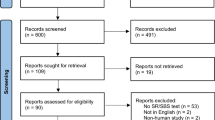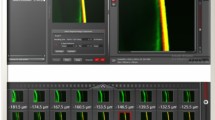Abstract
Design Randomised controlled trial.
Study population Patients undergoing routine orthodontic treatment, aged 12 years and older, were randomly allocated to use either Clinpro 5000, Clinpro Tooth Crème or MI Paste Plus for 4 months.
Data Analysis Three-way analysis of variance (ANOVA) was used to analyse the Enamel Decalcification Index (EDI) scores of the maxillary and mandibular arches from the right first premolar to the left first premolar at 0.05 level of significance. Fisher-protected least significant difference intervals were used to compare mean EDI scores. Two operators scored photographs independently and their scores were compared by using the t-test; no statistically significant difference (P ≥.05) was found between the operators. Results of each product were analysed individually and amongst themselves. A multilevel mixed-effects Poisson regression was used to model factors predictive of EDI scores for individual teeth.
Results Of the 120 subjects enrolled, 100 (35 using Clinpro 5000, 32 using Clinpro Tooth Crème, and 33 using MI Paste Plus) completed the study. The data lends support for Clinpro 5000 providing superior protection against enamel decalcification when compared to Clinpro Crème, and mixed support when compared to MI Paste Plus.
Conclusions The use of Clinpro 5000, Clinpro Tooth Crème, and MI Paste Plus all have a reduction effect on white spot lesions when compared to studies reported previously. They found Clinpro 5000 to have a marginally better effect than the two other test pastes.
Similar content being viewed by others
Log in or create a free account to read this content
Gain free access to this article, as well as selected content from this journal and more on nature.com
or
References
Chapman J A, Roberts W E, Eckert G J, Kula K S, Gonzalez-Cabezas C. Risk factors for incidence and severity of white spot lesions during treatment with fixed orthodontic appliances. Am J Orthod Dentofacial Orthop 2010; 138: 188-194.
Gorelick L, Geiger A M, Gwinnett A J. Incidence of white spot formation after bonding and banding. Am J Orthod 1982; 81: 93-98.
Mitchell L. Decalcification during orthodontic treatment with fixed appliances--an overview. Br J Orthod 1992; 19: 199-205.
Tufekci E, Dixon J S, Gunsolley J C, Lindauer S J. Prevalence of white spot lesions during orthodontic treatment with fixed appliances. Angle Orthod 2011; 81: 206-210.
Melrose C A, Appleton J, Lovius B B. A scanning electron microscopic study of early enamel caries formed in vivo beneath orthodontic bands. Br J Orthod 1996; 23: 43-47.
Robertson M A, Kau C H, English J D, Lee R P, Powers J, Nguyen J T. MI Paste Plus to prevent demineralization in orthodontic patients: a prospective randomized controlled trial. Am J Orthod Dentofacial Orthop 2011; 140: 660-668.
McCambridge J, de Bruin M, Witton J. The effects of demand characteristics on research participant behaviours in non-laboratory settings: a systematic review. PLoS One 2012; 7: e39116.
Artun J, Brobakken B O. Prevalence of carious white spots after orthodontic treatment with multibonded appliances. Eur J Orthod 1986; 8: 229-234.
Author information
Authors and Affiliations
Rights and permissions
About this article
Cite this article
Smyth, R., Noar, J. Preventing white spot lesions with fluoride pastes. Evid Based Dent 20, 88–89 (2019). https://doi.org/10.1038/s41432-019-0041-6
Published:
Issue date:
DOI: https://doi.org/10.1038/s41432-019-0041-6



